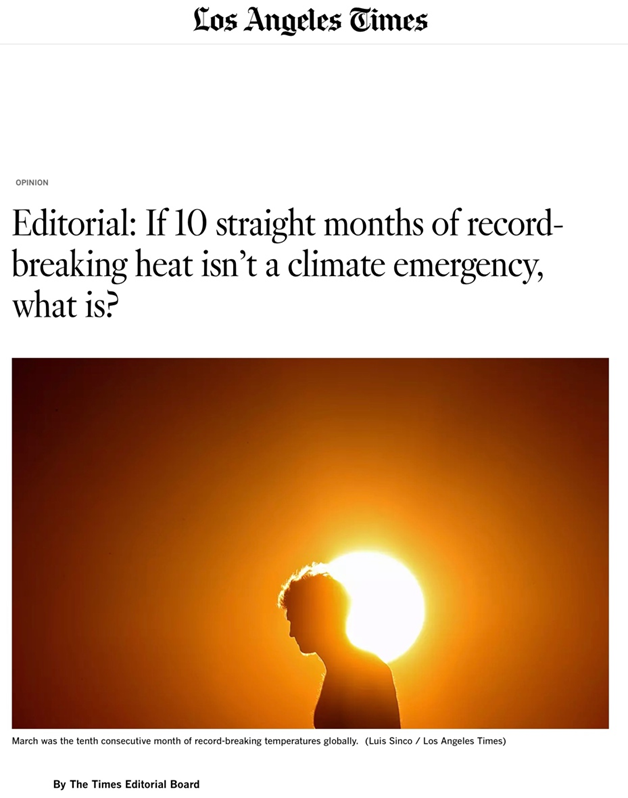Hide The Decline
http://notalotofpeopleknowthat.wordpress.com/2013/09/29/hide-the-decline/
By Paul Homewood
In an attempt to downplay the recent halt in global warming, the IPCC have claimed in their Summary for Policymakers that:
As one example, the rate of warming over the past 15 years (1998–2012; 0.05 °C per decade), which begins with a strong El Niño, is smaller than the rate calculated since 1951 (1951–2012; 0.12 °C per decade.)
Simply translated, this means that warming has slowed down to just under half what it was before. This message has been quickly picked up by the media, which, of course, was the main intention.
The dreadful Geoffrey Lean comments in the Telegraph:
The IPCC did, however, address a much more substantial sceptical point, that the temperature increase at the Earth’s surface has slowed down since 1998 to about 40 per cent of its average rate since 1951 – something it accepts it didn’t predict. One reason is that 1998, the year invariably chosen by sceptics, was one of the warmest ever.
So, at a stroke, the “pause” has become a “slowdown, but still significant” in the public’s eyes. But look deeper, and you will see this is a piece of devious trickery.
Is 1998 the best place to start?
First, let’s get rid of the 1998 red herring. The implication is that you can only get this “slowdown” by picking 1998 as the start year. The reality is that temperatures have been flat since 2001, which was a neutral ENSO year, and therefore comparable to this year. The Wood For Trees graph below shows this well.
Figure 1
http://www.woodfortrees.org/plot/hadcrut4gl/from:2001/to:2013/trend/plot/hadcrut4gl/from:2001/to:2013
They could also have mentioned that RSS satellite data actually shows a drop in temperature since 1998, not the small (and statistically insignificant) amount shown by HADCRUT4.
Figure 2
http://www.woodfortrees.org/plot/rss/from:1998/to:2013/trend/plot/rss/from:1998/to:2013
Longer term trends
But much more important than this attempt to deflect attention form the pause, is the way the IPCC have totally misrepresented the longer term trends. Figure 3 shows HADCRUT4 numbers going back to 1941.
Figure 3
http://www.woodfortrees.org/plot/hadcrut4gl/from:1941/to:1979/trend/plot/hadcrut4gl/from:1941/to:2013/plot/hadcrut4gl/from:1979/to:2001/trend/plot/hadcrut4gl/from:2001/to:2013/trend
Spot what they have done? Their base period of 1951-2013, against which they have measured post 1998 trends, includes:-
28 years of cooling – 1951-79
22 years of warming – 1979-2001
12 years of cooling again – 2001-2013
So, in total, during 40 out of the 62 years there has been a cooling trend. They are comparing a statistically insignificant amount of warming since 1998, with three decades of cooling. The result is to make this small trend sound much more significant than it is.
It would surely have been more honest to have compared the post 1998 trend with the 1979-98 period. If they had have done this, of course, most people would realised that the much trumpeted global warming really had stopped for the time being. And, in the IPCC’s eyes, that was not the message they wanted people to hear.
By this dodgy use of statistics and the 1998 red herring, they have also tried to distract attention from the clear fact that temperatures really have flatlined since 2001.
How temporary is the “temporary pause”?
It is commonly argued that a short pause in warming, of a decade or so, is not unexpected, amidst all the natural variability.. Back in 2010, the UK Met Office commented:
Recent Met Office research investigated how often decades with a stable or even negative warming trend appeared in computer-modelled climate change simulations.
Jeff Knight, lead author on the research, says: “We found one in every eight decades has near-zero or negative global temperature trends in simulations. Given that we have seen fairly consistent warming since the 1970s, the odds of one in eight suggest the observed slowdown was due to happen.”
But, if you go back to 1941, you have actually got 50 years of near zero or negative trends, and only 22 years of warming.
So which is the norm, and which is the rarity?
Sent by gReader Pro



